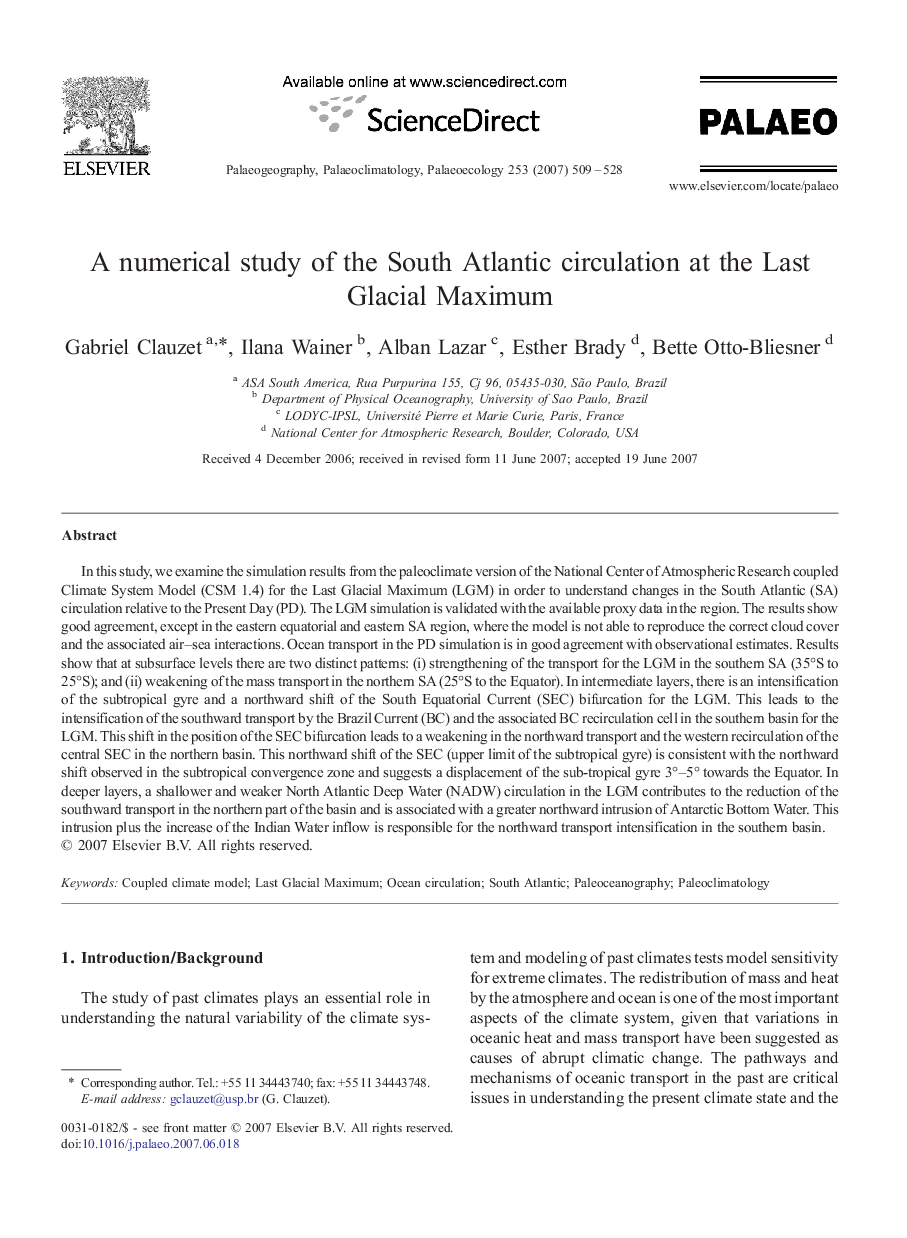| کد مقاله | کد نشریه | سال انتشار | مقاله انگلیسی | نسخه تمام متن |
|---|---|---|---|---|
| 4468917 | 1622344 | 2007 | 20 صفحه PDF | دانلود رایگان |

In this study, we examine the simulation results from the paleoclimate version of the National Center of Atmospheric Research coupled Climate System Model (CSM 1.4) for the Last Glacial Maximum (LGM) in order to understand changes in the South Atlantic (SA) circulation relative to the Present Day (PD). The LGM simulation is validated with the available proxy data in the region. The results show good agreement, except in the eastern equatorial and eastern SA region, where the model is not able to reproduce the correct cloud cover and the associated air–sea interactions. Ocean transport in the PD simulation is in good agreement with observational estimates. Results show that at subsurface levels there are two distinct patterns: (i) strengthening of the transport for the LGM in the southern SA (35°S to 25°S); and (ii) weakening of the mass transport in the northern SA (25°S to the Equator). In intermediate layers, there is an intensification of the subtropical gyre and a northward shift of the South Equatorial Current (SEC) bifurcation for the LGM. This leads to the intensification of the southward transport by the Brazil Current (BC) and the associated BC recirculation cell in the southern basin for the LGM. This shift in the position of the SEC bifurcation leads to a weakening in the northward transport and the western recirculation of the central SEC in the northern basin. This northward shift of the SEC (upper limit of the subtropical gyre) is consistent with the northward shift observed in the subtropical convergence zone and suggests a displacement of the sub-tropical gyre 3°–5° towards the Equator. In deeper layers, a shallower and weaker North Atlantic Deep Water (NADW) circulation in the LGM contributes to the reduction of the southward transport in the northern part of the basin and is associated with a greater northward intrusion of Antarctic Bottom Water. This intrusion plus the increase of the Indian Water inflow is responsible for the northward transport intensification in the southern basin.
Journal: Palaeogeography, Palaeoclimatology, Palaeoecology - Volume 253, Issues 3–4, 27 September 2007, Pages 509–528